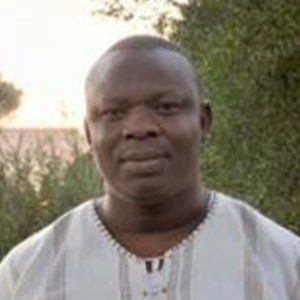
Photo: Claudio Soldi/Shutterstock
The Uganda Bureau of Statistics (UBOS) continues data collection for the Uganda High-Frequency Phone Survey (UHFPS). The survey has been initially used to track the socioeconomic impacts of COVID-19 on the national population, but now has a wider scope to measure the impacts of other shocks as well. The financing for data collection and technical assistance has been provided by the World Bank, the Global Financing Facility, and the United States Agency for International Development (USAID). The survey recontacts households that had phone numbers for at least one household member or a reference individual from the Uganda National Panel Survey (UNPS) 2019/20. The first round of the survey was conducted in June 2020. The latest, eighth, round was conducted in June/July 2022 when almost all COVID-19 restrictions were lifted, but the population was affected by increasing prices and weather shocks. During this round, several new modules were introduced including economic sentiments, access to and prices of essential goods, and weather shocks. This blog highlights selected findings related to access to essential products and impact of weather shocks.
In the eighth round, respondents were asked about the need and access to essential goods and products during the past seven days. Those who needed but were not able to access any products or bought less than the desired amounts were asked about the reasons. Access to many essential products was limited (Figure 1). Thus, one-third of the households were not able to access gasoline, fish, eggs, and beef when needed. About 20% of households were not able to buy rice, bread, cooking oil, groundnuts, and sweet potatoes. Fresh milk, fresh beans, sugar, and soap were not accessible to about 10% of all households. Many households were not able to purchase the desired amounts of products they needed. Thus, about half of households who managed to buy cooking oil and soap were not able to buy the desired amounts. Lack of money was the most reported reason for lack of access to products, while the increase in prices was frequently mentioned in explaining the inability to buy the desired amounts. No access was also associated with products being out of stock. The inability to access green beans, sweet potatoes, eggplants, and greens was to a large extent related to this reason.

Note: Quintiles are based on pre-COVID-19 consumption per adult equivalent. Selected products with very high access rates were dropped from figure 2.
Access to essential products was highly correlated with monetary well-being as measured by pre-COVID-19 consumption quintiles (Figure 2). Households from the poorest bottom quintile had much lower access to all products compared to households from the top richest quintile. For example, 56% of households from the poorest bottom quintile were not able to access any bread compared to only 16% among the richest top quintile.

Increased prices and limited access to essential food products might have contributed to very high food insecurity among Ugandans in June/July 2022. About half of the national population were moderately food insecure and 13% were severely food insecure (Figure 3).
Food insecurity was particularly high in the poorest Eastern and Northern regions. Thus, almost 80% of the population in the Northern region was moderately food insecure. Every fifth individual in the Eastern and Northern regions was severely food insecure in June/July 2022.
The increase in prices was not the only shock respondents were asked to report in the eighth round of the UHFPS. They were also asked about extreme weather events which were expected to affect their financial well-being during the next 12 months, and which happened during the last 12 months. Figure 4 reports both indicators. About 58% of all respondents believe extreme weather events will likely affect their finances during the next 12 months. About 69% of households were affected by at least one such weather shock as delayed rain, drought, or flood during the last 12 months. In particular, about 56% of households were affected by droughts, 50% by delayed rains, and two percent by floods. Respondents from the Northern and Western regions reported the highest incidence of extreme weather events during the last 12 months. Households from the poorest pre-COVID-19 consumption quintile had a higher actual incidence of shocks and had higher expectations to be affected in the future.

Note: Three types of weather shocks were considered: droughts, delayed rainfall and flooding. Quintiles are based on pre-COVID-19 consumption per adult equivalent. *Small sample size.
Respondents who experienced extreme weather events were asked about the perceived spread of the shock. The absolute majority of affected households felt that droughts, irregular rain, and flooding affected either most or all households in the community. When asked about the exact implications of shocks for their households, loss of crops was reported by about 90% of affected households regardless of the type of shock (Figure 5). Flooding was a rare event but had the most detrimental effect not only on crop loss but also on loss of livestock (53%), damage of property (60%), displacement (28%), and death/injury of household members (12%).
If you are interested to learn more about findings from the eighth round of the UHFPS, please check the brief here, while the microdata and related documentation are freely accessible at the World Bank’s Microdata Catalog here.
The members of the team working on the Uganda High-Frequency Phone Survey on COVID-19 (listed in alphabetical order for each institution) are: UBOS: Stephen Baryahirwa, Audrey Kemigisha, and Andrew Mupere; World Bank: Aziz Atamanov (Poverty and Equity GP), Frederic Cochinard (LSMS), John Ilukor (LSMS), Talip Kilic (LSMS), and Giulia Ponzini (LSMS).






Join the Conversation